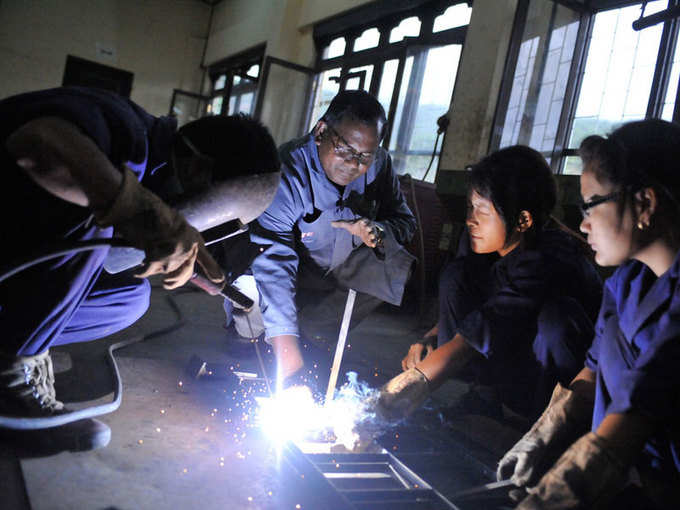 It’s a whole new world of business today.
It’s a whole new world of business today. When I started Simplilearn, I realized that nothing is more important than the team. If you have the right set of people, no distance is too far. And that’s something I believe is still true – not just for start-ups but for enterprises as well. It is important to have great people and updated skill sets if a company must sustain and achieve its goals in today’s fast-evolving digital space. In many of my conversations with leadership teams at large enterprises, I’ve noticed that hiring is the first thought when they think of acquiring new technology skills for their teams. And that’s fair enough! But a study by the Society for Human Resources Management suggests that companies spend almost 6 – 9 months of an employee’s salary trying to hire skills from outside the company. And it does not stop there. There are intangible costs such as onboarding, time spent on hiring, cultural impact on fellow employees that add to your overall hiring costs.
Many enterprises are looking at this problem differently. Rather than hiring, the focus is now on developing their existing workforce. With ongoing learning programs, companies help their staff acquire new skills and technology know-how. Interestingly, the cost of training and certifying employees is much lesser and predictable when compared to hiring.
● Boost retention: SHRM 2016 report on job satisfaction suggests that Millennials placed more importance (95%) on job-specific training, career development opportunities, and career advancement as compared to older generations. But employee training is not just a perk for retention. A study by the
● More productive: In knowledge-based industries, providing employees with intensive internal training results in higher productivity. And this is not restricted to technology skills. Supplementing technical skills with business skills training enables employees to get a deeper understanding of the industry and to align their efforts with the company’s business goals.
Is automation the answer?
Automation has been gaining a lot of momentum in recent years and one is left wondering if this could mean a cut in jobs. Are we at the beginning of an era where machines are finally going to take over humans? I believe not. This is very similar to the paranoia during Industrial Revolution when machines were first used on a large scale and everyone believed that human jobs would be taken away by machines. They did, in a positive sense. They brought down hard labor jobs.
While automation is going to simplify a lot of things, improve many business processes, and overall contribute to an organization’s effectiveness, human intervention cannot be discounted from the business scene. With automation easing out a lot of processes and inter-function interactions, employees will be able to direct their efforts on real challenges that are high on thinking and creativity. Automation will probably mean that employees need to adapt to a new way of working and acquire new skills to fit into the new dynamics of work.
Challenges to
Most companies today are geographically dispersed. Not just that. Many times, companies have a workforce that’s constantly on the field or people that might work in different shift timings. This makes it imperative that your training and development program must be accessible from different locations and time zones. This means that companies will be looking at inherent challenges such as travel costs, language barriers, and translation costs. Consequently, ensuring the consistency of such trainings becomes extremely difficult. As a work-around, many companies collaborate with learning partners and industry experts from outside the organization to update employee skills and expertise.
Most companies I’ve spoken to, also find that the changes in technology are so swift that ensuring an updated course content is a daunting task. It’s also a challenge to find relevant in-house expertise to develop these training and development programs. Ensuring course completion is another challenge that many companies talk about. Learning and Development functions are constantly trying to inspire and motivate employees to drive completion rates. And even then, many companies are unable to objectively track the stickiness of the new skills learned and analyze how useful these are in real-work environment.
Millennials are driving a lot of changes in the way companies operate. Everything from the work timings, company policies, perks and benefits to the lingo at work itself, have transformed. So when companies plan learning and development strategies, traditional methods of classroom trainings might not be cool. Virtual class-rooms and self-paced learning methods that provide content that is more engaging and allow the learner to take up a course at a time and place of his choice is going to be critical.
Above all, to give their best, employees must feel that they are a part of the team and that they are contributing to meaningful work. So while you focus on training and developing your workforce, creating a workplace that is engaging and allows people to work together goes a long way in shaping how your company will sustain and grow.
(Image Credits: Flickr)
(About the Author: This article has been contributed by Krishna Kumar, CEO, Simplilearn)
